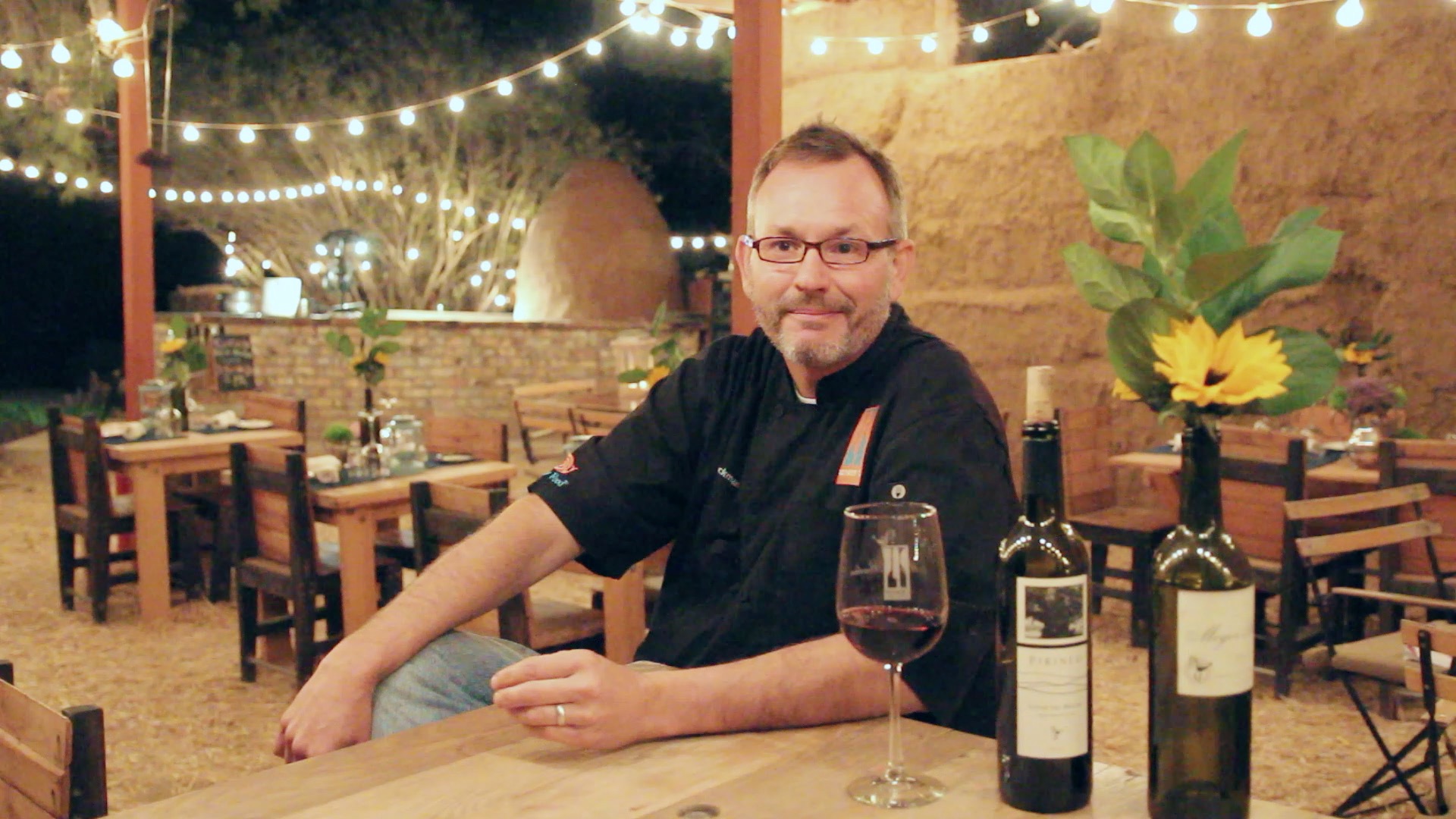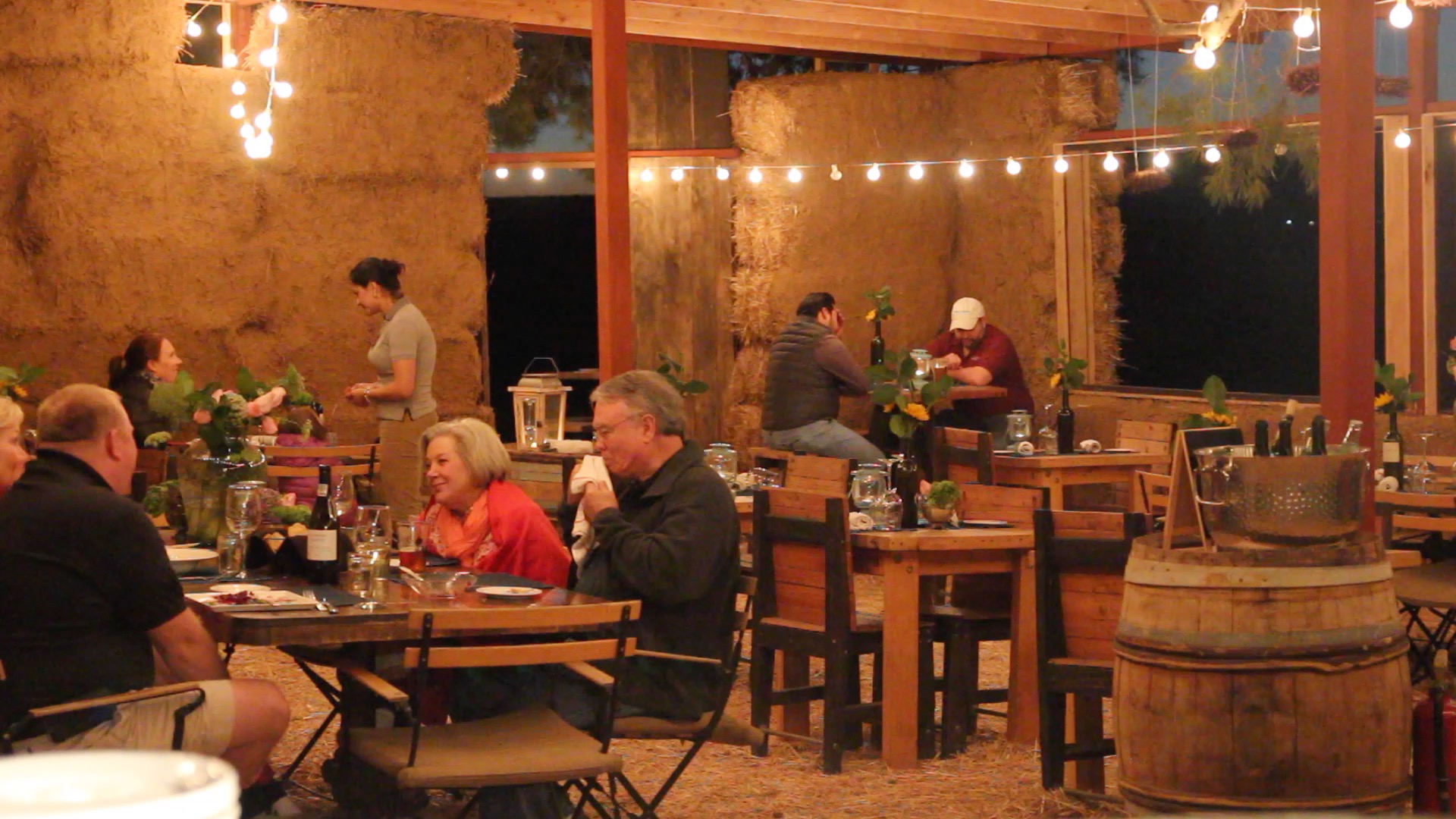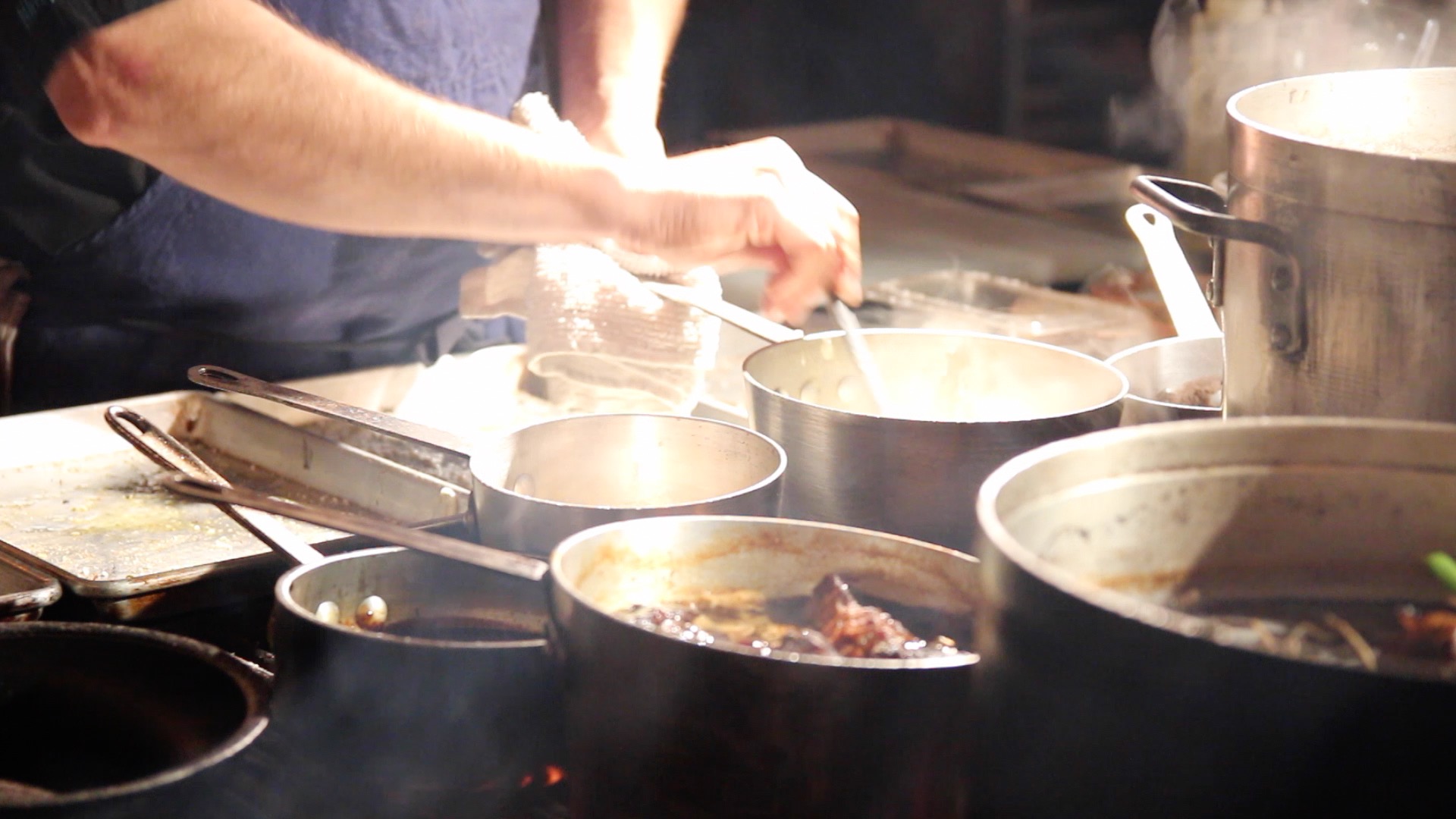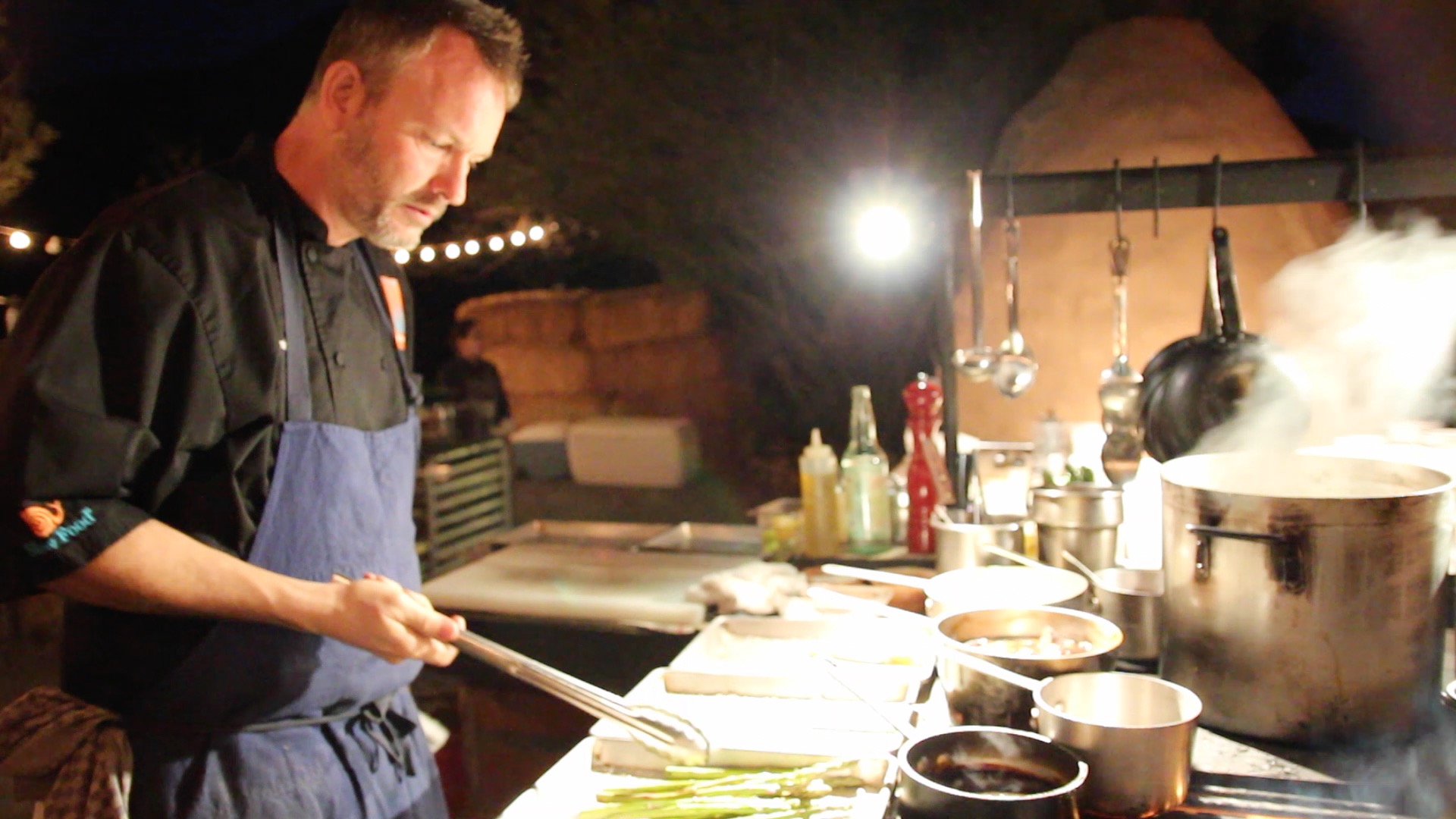
Drew Deckman is a Georgia native who trained under legendary French chefs Paul Bocuse and Jacques Maximin. While working in Germany at Restaurant Vitus in Reinstorft he was awarded a Michelin star and later was named 2003's Rising-Star Chef during his tenure as executive chef at the Four Seasons Berlin. Deckman opened his first Mexican restaurant, Deckman's San Jose, in Los Cabos in 2010 before opening Deckman's en El Mogor in The Valle a year later.
We talked to Deckman about the growth of Valle de Guadalupe, Mexican cooking and the salinity of the Baja wines.
Christopher Barnes: Drew, tell us about how you came to Baja, California. You're a native of Georgia, is that correct?

Drew Deckman: Yeah, I grew up in Georgia, went to college in Memphis, Tennessee. I have a degree in philosophy, of all things, so what do you do with that? You boil water for a living, right? I had the opportunity to go to Europe. I thought I was going for six months, stayed for 10 years. Did some time in Switzerland, France, and Germany. Moved to Hawaii for a while. I was in Asia for a while.
My other gig is I fish for a living, so originally I moved to Mexico, to Los Cabos, where I could fish on a professional level that I was accustomed to and cook on a professional level that I was accustomed to. Then six years ago I found the valley and every year since I'd spend a little more and I'd spend a little more and finally this year, I pulled up all the roots in Cabos and have come full-time now to the valley.
Tell us about the valley. It's a very unique place and there's certainly a type of terroir, which is unique to Mexico. Maybe talk about the wines that are being made here right now.
When you talk about Guadalupe Valley, I don't think you can talk just about the wine. I think that what's happening here is it's sort of a holistic community, as far as the art of living well is concerned. Great craft beer, unbelievable ingredients, some of the best seafoods in the world land at the Ensenada Port, which is 25 minutes from here. Then you get the wines and now people are making artisan distillates and Grappas and Moscatos.
Okay, there's a challenge in the valley with salinity, obviously. We have several different growing zones. Closer to the ocean, we have more of a maritime effect, cooler weather, more humidity. Chardonnay does well, Cabernet does well. The farther up valley you go, it's warmer, drier. Grapes that can take more stress like Syrah, Zinfandel; those are the ones, Primitivo, Tempranillo. Tempranillo's a grape that just loves the valley. Nebbiolo.
These are all grapes that, in their origin, come from places that are very arid, very dry rocky land, clay, which is similar to the soil types that we have here. Disadvantage, this all used to be seafloor, so valley floor, aquifer, there's a lot of minerality in it, and it's part of the deal, and you're watering with water that has an elevated salinity. It's going to concentrate in the grape. It's part of the playing field, I think, here in the valley.

There was an article in the Journal and it made you guys look amazing. The restaurant, the wines, it was very, very complimentary. It wasn't as complimentary about some of the other wines in the valley. What is your opinion of the level of winemaking that's going on here right now?
Let's touch on the article first. We were treated very well in that article and it was a wonderful thing for us, but we, as Project Mogor, the entire ranch, our winery, everything we stand for, our organic farm, we're more concerned about the destination. For us, it's, as a whole, united, we all win. It's not about me. For us, the article was sort of a double-edged sword: it was great on one side; but, at the same time, our friends are being criticized, and I'm not sure that due diligence was done. I don't think enough time was spent, probably.
I'm sure that you'd agree that you can go to the same restaurant, you go once and you go, oh God, it was horrible, but everybody else loves it. Well, maybe you just didn't order right or had a bad day or maybe it was you, maybe it wasn't them. It's tough to do a snapshot of a place like that and make sort of a blanket statement. What was the rest of the question?
What your thoughts are about the level of winemaking that's going on in the valley right now.
Guadalupe Valley is an interesting place. Wine has been made here for a long time, but a lot of wine has only been made here for a short amount of time. What we're seeing is we're seeing huge increases in the number of wineries where wines being made, which doesn't mean every new winery has a new winemaker, there are several winemakers here in the valley that are making for other wineries, which is fine, but what we're seeing is an increase in wineries.
You can build a winery in three months. It takes seven to eight years for a vineyard to come to a point to where the grapes are really usable, so most of the vineyards here are less than 25 years old. A lot are less than 20, less than 15. All right, how do you feel as a person, can you note a difference in your life between age 30 and 31? It's not near as marked as between age nine and ten, does that make sense?
Well a vineyard's the same way, so things that are happening are the vineyards are starting to mature, so every year you get different grapes and then it levels out at about 12, 13, 14, then you start to see some consistency. It's almost vertical up to that point. It doesn't really matter how many times you've made wine, when you make wine in a new place, a new winery, you literally have to reinvent the wheel. You understand the concepts, but every winery functions a different way.
Every winery has its own logistical issues; where does the fruit come in? Architects don't always meet with the winemaker when they design a winery, so as each vintage passes here in the valley; we probably have 10 really serious vintages, maybe 15. That's not a lot. For example, here on the ranch where our restaurant is, 1987 was the first year of our first vintage, so 2012 we celebrated 25 years. There are not a lot of boutique, I don't really like that word, smaller wineries, artisan wineries, that can say they've been here producing wine for 25 years.
As I describe those situations, as people are becoming more accustomed to their wineries and have better vineyards, the learning curve is vertical, so every year you see an increase in quality that's sort of unparalleled, but it's the combination of vineyards maturing, people understanding the wineries where they're working, all coming together. We've had some challenging years. This year I think we were at 50% production because of lack of water across the board. That hurts, but the fruit was phenomenal.
There wasn't much, but it was like, wait, this is the best fruit I've ever seen, there's half of what we normally have. Quality of our winemaking, I think it's exceptional. There are no rules here, right? We are not in Bordeaux, no one's legislating what varietals we have to use. Finally, people are starting to understand what grapes work here.
They've been making wine in this area for a long time, right? The Jesuits were making wine here.

Absolutely.
Do you have a sense of what grapes really represent the area?
I think the original grapes were Carignan, and there's still some vineyards here that are Carignan that are dry farmed. One called Juan Carlos Bravo does 100% Carignan that's dry farmed and you drink them and you go, whoa, all right, now we're talking. Now it's something different and it's a grape that a lot of people aren't familiar with.
It's a grape that traveled well on the ships that come here and it's a grape that's bulletproof, essentially. I think when you start to listen to your vineyard and allow your fruit and your vineyard to tell you what varietals should be in your tanks, I think that's when you start to win. When you start to make decisions based on what the market wants or what you think, which is the key, it's what you think the market wants, I think that is where you have a disconnect with your vineyard.
It's like the kitchen, a lot of the people say the chef's the most important. I think the chef is probably four or five or six down the list after ingredient, ingredient, ingredient, ingredient, and then maybe, maybe we'll talk about the person facilitating the ingredient. Most winemakers will tell you that the wine's made in the vineyard, not in the winery.
Tell us about your philosophy of cooking here. I mean it's a very unique place that we are; all of the ingredients are amazing. What is your philosophy with the food here?
Do I have a philosophy? I don't know that I can articulate my philosophy. Sometimes when you see a painting you know if you like it or not, you can just say, "Wow, I like that, oh I don't like that," and you may not be able to say exactly why you don't or you do. For me, how we source and what we try to represent in the food that we do, my goal is to have 100% vertically integrated restaurant, which I don't think you can get to 100%, but you can get close.
We use honey produced here on the ranch to make beer. We only serve olive oil made from olives that grow on the ranch. We try to get as close to 100% of the vegetables we serve, here from the garden. Some stuff doesn't grow here. Potatoes don't do well here. The whole idea of working in concentric circles, if you can't find it right where we are, let's not look for something way over there, let's go okay, what does the neighbor have?
The way we write our menu, we don't write our menu and then look for the ingredients, we find the ingredients and then put the menu together. We let the ingredients and the market mandate what we're going to cook. It's partly about being a good neighbor. It's partly about consuming locally. It's partly about having a responsibility. You have a responsibility every time you buy food, you're voting. Every time you order something in a restaurant, you're voting; you're voting with your fork. That's a pretty big responsibility. People don't really realize what their buying choices can do to the market.
You're from Georgia, but you have a restaurant in Mexico, do you consider your cooking Mexican at this point?
How much time do we have? I have a really good friend, Javier Plascencia, who's a very, very well-known Mexican chef based in Tijuana, who also has a restaurant here in the valley, and Javier and I have had this discussion a hundred times. The discussion is, first of all, I don't cook Mexican, because, in a traditional sense, I'm not Mexican, I would never be able to replicate the taste heritage that you have growing up in that food.
You can acquire it later and understand it, maybe copy it, but you don't have that ingrained. We use a 100% Mexican ingredients, I don't use anything imported. My argument with Javier, always, is the future of Mexican food, as Mexican food, Mexican food is hot, man. Ferran Adria is opening a Mexican restaurant in Barcelona, if it's not already open.
You go okay, wait, this is really important, it's impossible for me to communicate to you my grandmother's mole, if I was Mexican. I can't communicate history in a way that you can feel the same way that I do, but I can communicate origin, I can communicate ingredient. Everybody understands where an ingredient comes from or what this ingredient is or why this ingredient is special. You take it sort of one degree removed from grandma's mole and now you can communicate.
My opinion is the future of Mexican food is anything made, because Mexican food is changing exponentially. The best guys in Mexico are doing traditional food in a way that you look at it and you wouldn't recognize that this is a traditional recipe. That's respecting the origin, respecting the ingredient, but now taking a different freeway, so to speak. That's what I feel; it's a subjective personal opinion. I celebrate Mexico. I celebrate the origin. I celebrate Mexican ingredients. I celebrate mezcal and Mexican wines and beer. I don't think anyone would say that I cook Mexican.

Tell me about the wines that you make here on the property.
Our winery this year moved up to four different wines. We're a very small production, somewhere around 1500 cases a year, so it's very, very artisan. Our flagship wine is the Mogor Badan, which is all estate raised fruit, Cabernet Sauvignon, Cabernet Franc, Merlot, that was the original wine in 1987, so we're going on 27 vintages now. That's our flagship, that's a very famous, very prestigious wine here in Mexico.
The other is an estate white called Chasselas, which is a Swiss grape; it's got a little bit of Sauvignon Blanc in it. The owner of the ranch is also a part owner in a vineyard in France, so there's a trend here in the valley of doing French-Mexican wines. Wine is vinified in France, shipped here in bulk, mixed with wines vinified here in Mexico, and you create a Franco-Mexicano blend, so that's like the Pirineo, that we have here is Petite Sirah, here from the valley, and Syrah from France.
The fourth is an all French white, but made in the vineyard of the same owners there. Actually bottled there and then brought here and that's a Grenache Blanc and a Macabeo, so our wines are very, very, very European in style. Traditional, I don't think that there's a lot of risk taking. I think they're well-built wines. One of the privileges and honors that I have is where I cook is also where my favorite wines in the valley are.
Where does the badger build his home is like in a prairie dog town, close to the food or close to what he likes. Wines we have are wines that are noble. They're educated. They have some experience on the vines. They're different and very Old World in style compared to some of the other things that are happening in the valley, which is it's like cooking, everyone's right or everyone's wrong. Making wine, it's subjective; hey, you know what, you're right, you're wrong; same time.
I'm going to go make wine, I'm going to make it different than you, because this is what I feel and that's what makes it beautiful. There are so many people here doing so many different things that you can literally find what you're looking for no matter what it is.
How would you describe the terroir in the valley?
It's really varied. For example, here in Mogor Bodan, or Rancho Mogor, we have an advantage in that our water doesn't come from the aquifer, our water comes from the mountains, so we don't have some of the concentrated minerality and some of the concentrated, I'll use the word salinity, that some of the other valley floor vineyards have. It's an issue. This used to be seafloor. There's salt in the aquifer. We're 11 miles from the ocean. All these things play into part of the terroir.
You can farm differently, trying to reduce that, but essentially, I like the marine tones that are in some of the wines, they are very Ensenada, they're very Guadalupe Valley. They go well with foods that are from here; abalone and geoduck and oysters and gooseneck barnacles and all these wonderful products that we have right here in our hands, the wines, like the food, have a relationship with ocean.
Drew, there's been a lot of development in the valley, how do you see the future of the valley in terms of getting bigger?
Guadalupe Valley is on fire. I mean this is a hotbed of creativity, winemaking, beer making, food production, culinary. In Mexico, it's Mexico City and Guadalupe Valley, that's where things are happening. The growth, obviously, as people begin to see that the valley's growing, it's the first time we're starting to see, I call it shiny investment, investment from the outside. Maybe not interested in wine, not passionate about wine or food or growing, but passionate about making money.
That's one of the things here in Mogor is that it's really, really important for us to be good neighbors, to be integrated with the land, to be one with the land, and respect what we have here. If we don't, when it changes and Mickey Mouse comes to town, it won't be what we had. Growth and change is inevitable, it's important. I think guiding that growth is the real key and the responsibility on everybody that's here now. It is to help the valley continue to be a sustainable place and the reason why it's become successful and happy.
How do you do that? Is it legislation? I mean asking people to police themselves seems to be a bit optimistic.
I think legislation is challenging. It's challenging because it's not always the best place to look for help here. I think more grassroots type movements, the Valle United is sort of a people fighting the good fight essentially together and being a voice and being a strong voice and people listen. I think that's the only way that, you know, you can't stop the future. You can't just go, okay, shut it down, let's build some gates, we have enough. You can't do that; it's going to continue to grow.
People are going to continue to build vineyards. People are going to continue to build hotels. Everybody wants a piece of what's going on here, it just has to be in a way that there's water for everybody. There's infrastructure for everything that's being built. Hey, you're going to bring more employees to the valley, great, let's build like a school, maybe, or some affordable housing or things that you can support all this sort of big boom. Everybody's talking about this; nobody's talking about the heart you need to make the rest of it work. There's not a lot of water. Water's going to be the key.
Read our feature story on the Valle de Guadalupe and watch our video interviews with:
Pau Pijoan of Viñas Pijoan
Israel Zenteno of Monte Xanic
Tru Miller and Daniel Lonnberg of Adobe Guadalupe
Alvaro Alvarez-Parilla of AlXimia
Paolo Paoloni of Villa Montefiori














